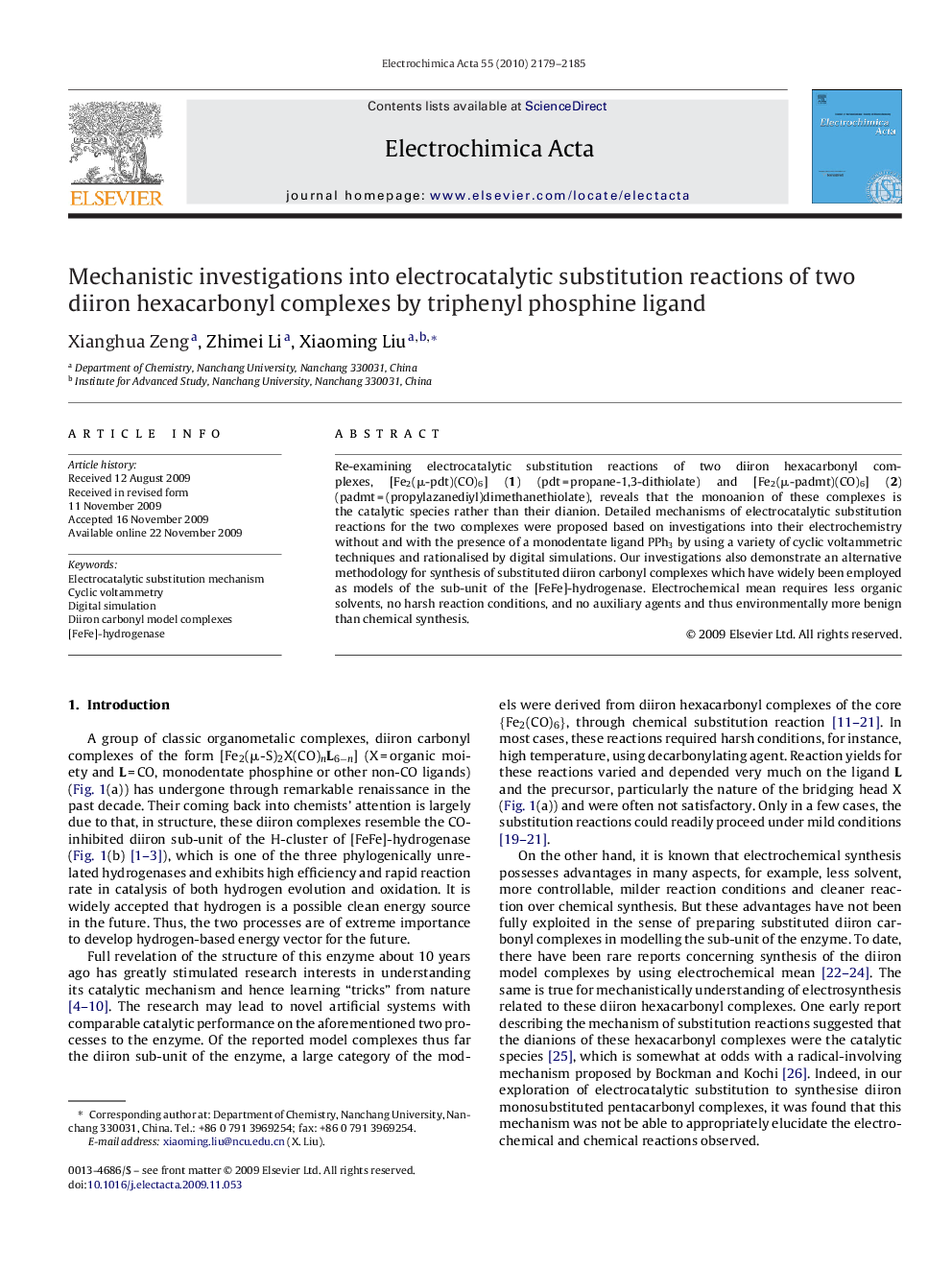| Article ID | Journal | Published Year | Pages | File Type |
|---|---|---|---|---|
| 191791 | Electrochimica Acta | 2010 | 7 Pages |
Re-examining electrocatalytic substitution reactions of two diiron hexacarbonyl complexes, [Fe2(μ-pdt)(CO)6] (1) (pdt = propane-1,3-dithiolate) and [Fe2(μ-padmt)(CO)6] (2) (padmt = (propylazanediyl)dimethanethiolate), reveals that the monoanion of these complexes is the catalytic species rather than their dianion. Detailed mechanisms of electrocatalytic substitution reactions for the two complexes were proposed based on investigations into their electrochemistry without and with the presence of a monodentate ligand PPh3 by using a variety of cyclic voltammetric techniques and rationalised by digital simulations. Our investigations also demonstrate an alternative methodology for synthesis of substituted diiron carbonyl complexes which have widely been employed as models of the sub-unit of the [FeFe]-hydrogenase. Electrochemical mean requires less organic solvents, no harsh reaction conditions, and no auxiliary agents and thus environmentally more benign than chemical synthesis.
